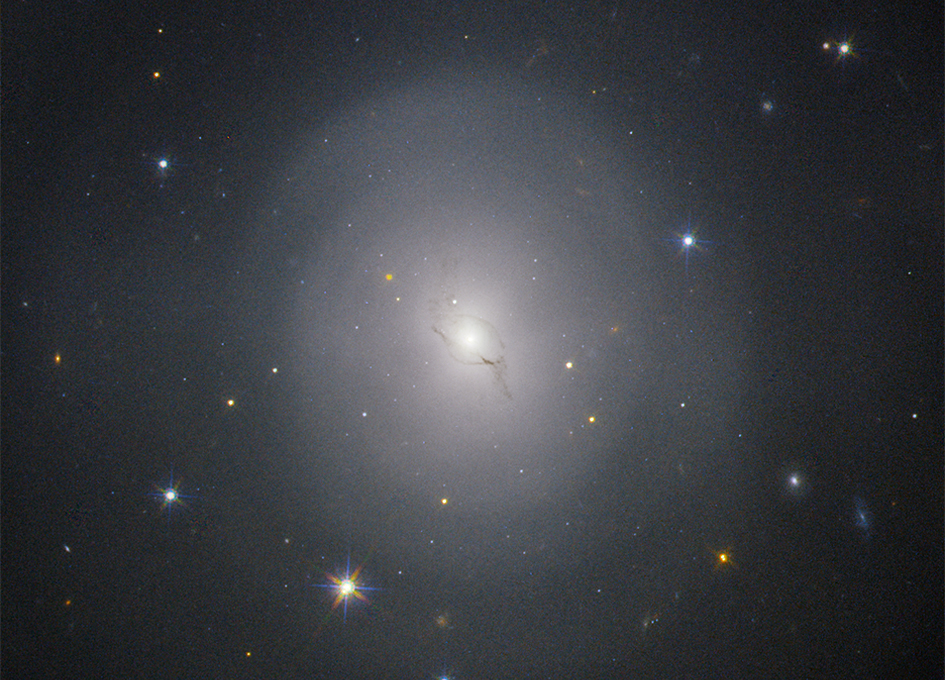Hubble Turns its Gaze Towards New Gravitational-Wave Event

NGC 4993
STSCI
The glow from this titanic collision, shining within the galaxy NGC 4993 is at a distance of 130 million light-years away.
On August 17, 2017, the Laser Interferometer Gravitational-Wave Observatory (LIGO) detected gravitational waves from a neutron star collision within this galaxy. The event also resulted in a flare of light called a kilonova, which is visible to the upper left of the galactic center in this Hubble Space Telescope image.
Hubble also obtained an infrared spectrum that may yield signs of exotic, radioactive elements. The analysis will continue while astronomers wait for the gravitational wave source to emerge from behind the Sun from Earth’s point of view, where it slipped just days after discovery.
Credit: NASA/ESA/Hubble








